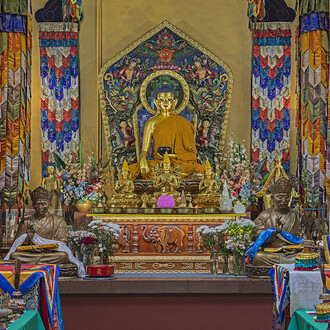The exhibition presents the culture of Central Asia from the earliest times to the Middle Ages.
The exhibition presents the culture of Central Asia from the most ancient states till early Islam. The exhibition opens with the cultural artefacts of the Saka nomads (1st millennium B.C.) and the objects of art of the Hellenistic States - the Parthian Empire (3rd century B.C.-2nd century A.D.) and the Greco-Bactrian Kingdom (3rd-1st centuries B.C.). The celebrated frieze - a stone relief of the 1st century A.D. with the figures of musicians - came from the Buddhist monastery at Ayrtam.
The examples of sculpture and painting found at Pendjikent, the wall paintings discovered at Varaksha acquaint the visitor with the culture of Sogdiana (5th – 8th centuries A.D.). Of world renown is the collection of Sogdian and Khorezmian silverware. The excavations at the mountain fortress of Abgar (the present–day mountain of Mug) discovered the materials which are displayed in the separate department of the exhibition devoted to Devastich, the last ruler of Pendjikent (early 8th century).
















